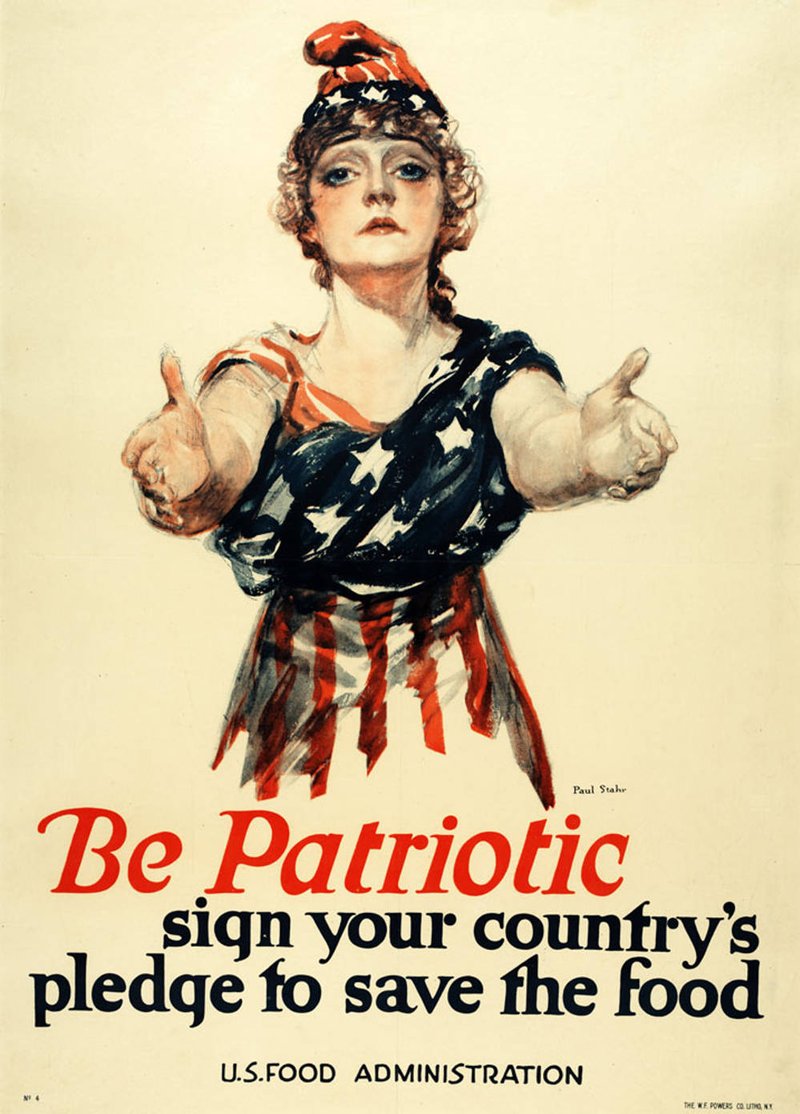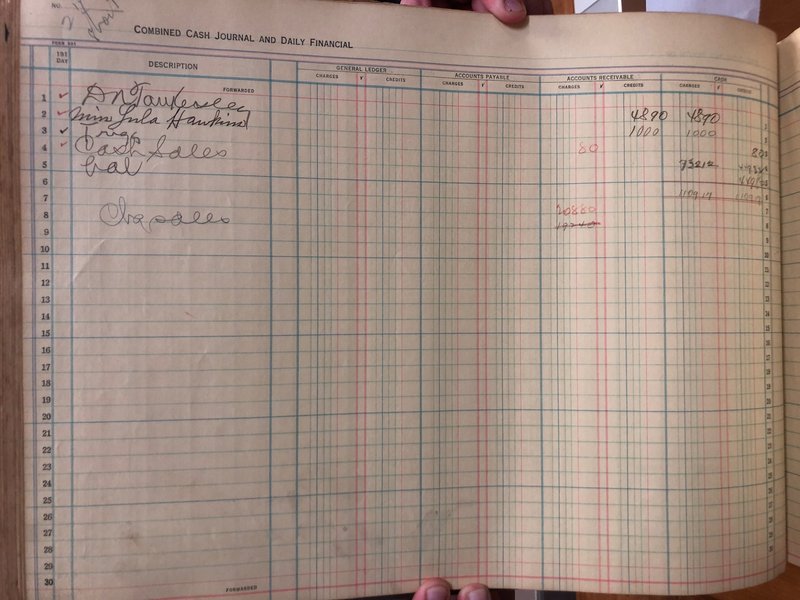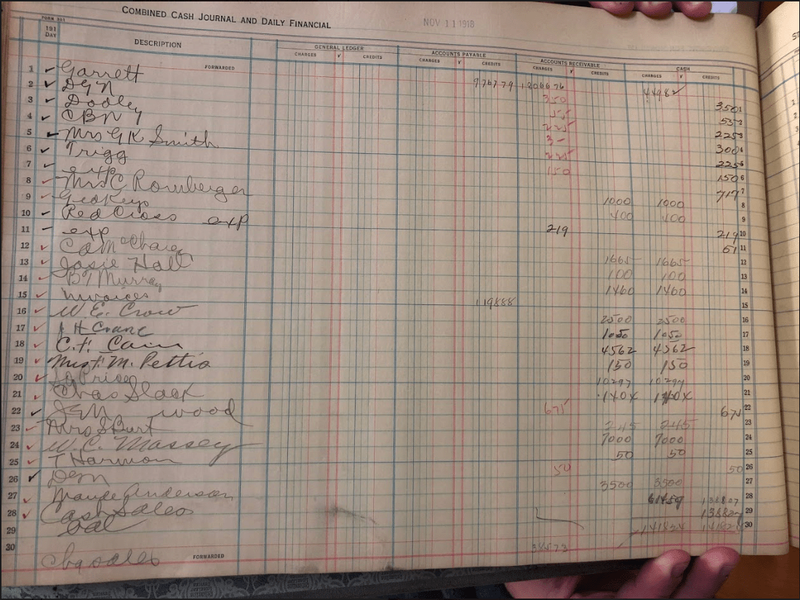Student Work
Purchases and Rationing
By: James Z Stribling

Food shortages were widespread in Europe during the war. Even before the United States entered the war, American relief organizations were shipping food overseas. Publisher: U.S. Food Administration, 1918
Purchases and WW1 Economy
This excerpt of Neilson’s Ledger of sales for the dates of the November 10-13, 1918 shows a large increase in spending for November 11th and 12th compared to November 10th. This increase in spending directly corresponded to the day that Germany signed an armistice with the Allied nations, which brought an end to the First World War. There are many possible reasons for the increase in spending that began on November 11th and would continue into the late 1920’s. As shown on November 10, 1918 the total number of transactions combined with customers for that day is four. The following day on November 11th (Armistice Day) there were twenty-eight customers and transactions. On November 12th there were eighty-one customers and transactions. It is worth noting that many of the customers were making their purchases on credit. The ledger also shows that a large portion of the customers were women. This ledger offers a glimpse of what was happening in Oxford, Mississippi and the United States during this time.
In World War One the United States did not suffer the same mass destruction and mass loss of life that had plagued much of Europe. This allowed, and demanded, an increase in manufacturing and production to support the war effort.[1] The jobs this increase in manufacturing and production demanded was historically held by men. Since a large portion of the male population was overseas fighting the war women for the first time stepped into the workforce to fill the void.[2] This may explain why a large portion of the customers logged in Neilson’s ledger were women. The ledger shows that many of the items being sold were purchased on credit likely, caused by increased inflation combined with reduced wages that trended during World War One to offset the price of the war.[3]
The increase in sales on November 11th compared to November 10th is likely a result of Oxfordian’s buying goods to celebrate the end of the war. Another trend the ledger shows is that there is another large increase in sales on November 12th compared to November 11, 1918. The ledger shows many items purchased were food. During the First World War Americans were encouraged to live on food rations to help supply the troops with food.[4] People probably assumed that the food rationing campaign ended because the war ended, but it would not completely end until 1919.[5]
With the information Neilson’s ledger provides, we can get an understanding of what was happening in Oxford, Mississippi at the end of the First World War. This makes it an important document for being able to understand the lasting consequences the war had on the American economy and society as a whole.

Ledger 35, November 10, 1918 from Neilson’s Collection, Department of Archives and Special Collections, The University of Mississippi Libraries.

Ledger 35, November 11, 1918 from Neilson’s Collection, Department of Archives and Special Collections, The University of Mississippi Libraries.
Ledger 35, November 12, 1918 from Neilson’s Collection, Department of Archives and Special Collections, The University of Mississippi Libraries.
[1] “Effects of WW1 on America,” American-historama Organization, accessed January 9, 2019, http://www.american-historama.org/1913-1928-ww1-prohibition-era/impact-ww1-on-america.htm
[2] “Women in World War 1,” National Museum of American History, accessed January 9, 2019, http://americanhistory.si.edu/collections/object-groups/women-in-wwi
[3]“U.S. Economy in World War 1,” Economic History Association, accessed January 7, 2019, http://eh.net/encyclopedia/u-s-economy-in-world-war-i/
[4] U.S. Food Administration, “Biographical Sketch of Herbert Hoover, 1874-1964.” Herbert Hoover Presidential Library and Museum, National Archives and Records Administration, accessed January 9, 2019, https://en.wikipedia.org/wiki/Rationing_in_the_United_States#World_War_I
[5] “World War 1 – United States Food Administration,” U.S. Food Administration, accessed January 9, 2019, https://histclo.com/essay/war/ww1/cou/us/food/w1cus-usfa.html
